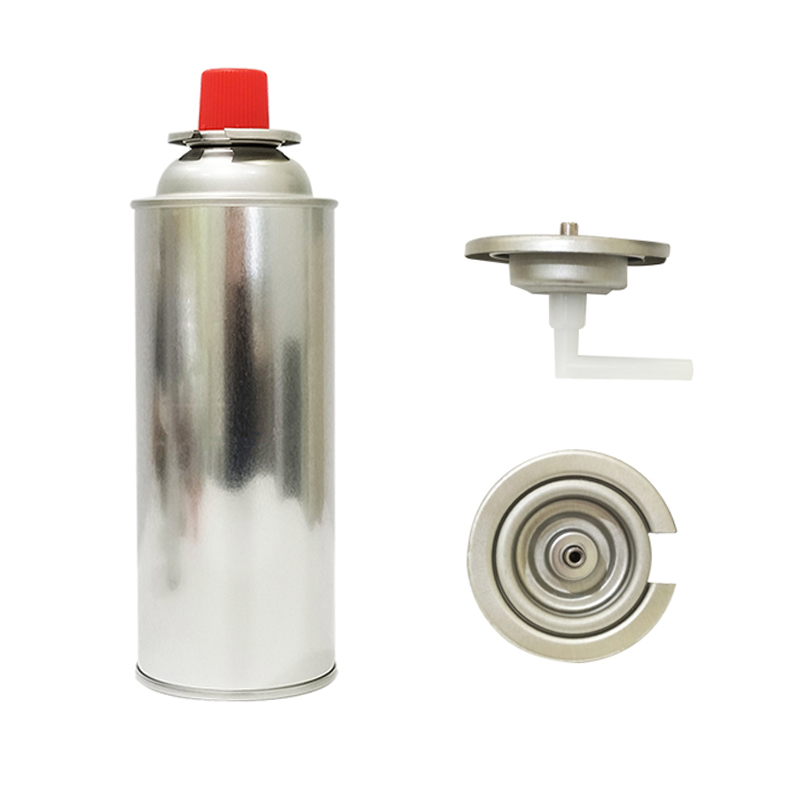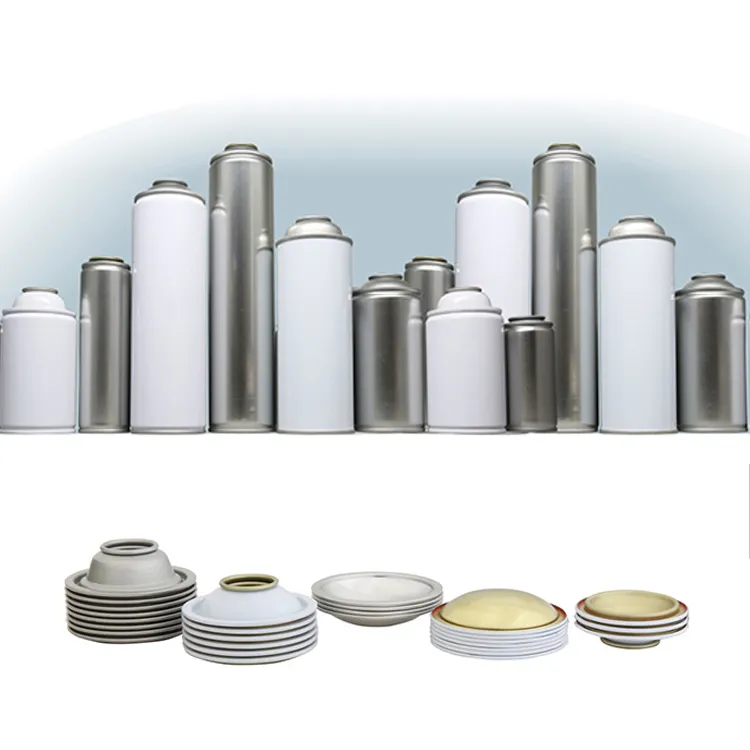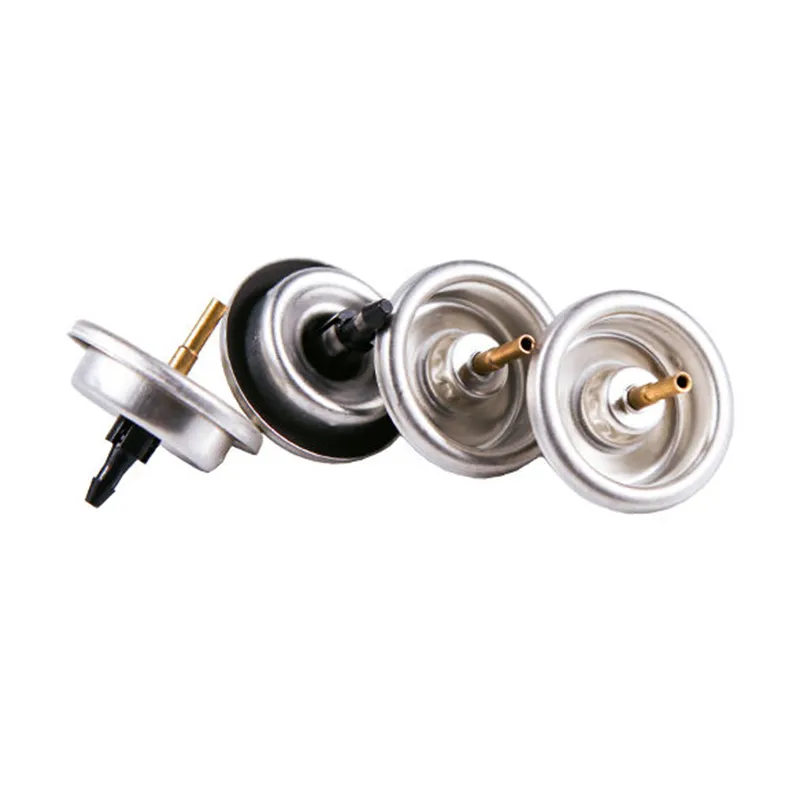In the rapidly developing consumer goods packaging market, tinplate aerosol cans, as cost-effective, corrosion-resistant, and pressure-resistant metal containers, have been widely used in cosmetics, household cleaning, industrial chemicals, and other fields.
Among the many key factors that ensure the safety and functionality of aerosol cans, two often overlooked yet crucial structures are the cone and dome.
So, how do you test the cone and dome of a tinplate aerosol can for compliance? How can you ensure they don't pose safety risks like can bursting and leaking? This article will systematically analyze the aerosol can inspection process and standards, and delve into the technical details of the "cone and dome" component.

What are the cone and dome components of an aerosol can?
In the aerosol can structure, the cone and dome are key structural units located at the top of the can:
1. The cone is the tapered portion connecting the cylindrical can body to the top dome.
2. The dome is the slightly raised, round metal cap that secures the spray valve and withstands internal pressure.
These two components not only contribute to the structural integrity of the can but also fulfill three core functions: sealing, pressure bearing, and connection. The quality of tinplate aerosol cans depends largely on the manufacturing and testing quality of the cone and dome.
Why is cone and dome quality testing so important?
In practical applications, quality defects in the cone and dome can directly lead to the following risks:
· Can explosion: The top cannot withstand pressure and bursts during filling or transportation.
· Leakage: Poor sealing at the crimp seal allows the contents to escape, causing gas or liquid to leak.
· Spray failure: Deformation of the top cap affects the installation and release of the spray valve.
Therefore, it is crucial for tinplate aerosol can manufacturers, testing agencies, and brand owners to establish a comprehensive testing process.

How should the cone and dome of tinplate aerosol cans be tested?
To ensure consistent quality and compliance with international export and domestic quality inspection standards, cone and dome testing primarily involves the following five aspects:
1. Dome Pressure Test
Test Purpose: Verify the dome's ability to withstand internal pressure and ensure it will not burst due to increased internal pressure.
Test Method:
· Place the finished aerosol can in water;
· Gradually inflate the can using a dedicated pressurizing device;
· Record the pressure at which the dome permanently deforms or bursts.
Judgment Criteria: Generally, the pressure required is no less than 1.2 MPa, with the specific standard depending on the intended use.
2. Cone Compression Strength Test
Test Purpose: Ensure that the cone structure will not dent or crack when subjected to vertical or lateral forces.
Test Method:
· Use a platen compression machine to apply constant pressure to the cone area;
· Observe for permanent deformation or cracks.
Judgment Criteria: Set a minimum compression threshold based on the can size and thickness.
3. Leak Test
Test Purpose: Verify the seal performance between the cone and dome, and between the dome and the spray valve.
Test Method:
· Use an airtightness tester to pressurize the seal;
· Detect any gas leaks or bubbles;
· Part of the test process uses a colored water spray to observe for leaks.
Judgment Criteria: Any leakage will be considered a defective product.
4. Material Thickness and Coating Inspection
Test Purpose: Verify the uniformity and corrosion protection of the tinplate material to prevent structural damage caused by corrosion.
Test Method:
· Use a magnetic induction or eddy current thickness gauge to measure metal thickness;
· Use a film thickness gauge to measure the thickness of the tin layer or anti-corrosion coating.
Judgment Criteria: The typical thickness of the cone and dome is 0.19mm to 0.25mm; the coating thickness should meet industry anti-corrosion standards.
5. Dimensional Tolerance and Shape Accuracy Inspection
Test Purpose: Ensure that the cone and dome are dimensionalally standard, free of warping or deformation, and facilitate seaming.
Testing Method:
· Use calipers, die gauges, and form gauges to inspect diameter, height, and edge roundness;
· Pay special attention to the circumferential error of the spray valve aperture.
Judgment Criteria: The error range is set according to industry standards or custom specifications, typically with a tolerance of ±0.1mm.

Have you encountered these questions when inspecting tinplate aerosol cans?
1. Do the inspection standards vary depending on the can's contents?
Yes. Aerosol cans containing flammable gases (such as butane and propane) require higher pressure resistance and seal testing; cosmetics require greater emphasis on coating and interior cleanliness.
2. Can only random samples be inspected?
While random inspections are a common industry practice, it is recommended that at least 5% of each batch of finished products be inspected. For export products, a full inspection is recommended to meet customs and market regulatory requirements.
3. Can the cone and dome be replaced individually if there are defects?
No. Once the crimping is complete, any deformation or leakage must be scrapped and cannot be repaired. Therefore, the sooner the inspection process begins, the better.
4. Recommended and Purchased Cone and Dome Inspection Equipment
For medium- to large-scale production lines or export factories, equipping the following equipment will significantly improve inspection efficiency and quality control:
·Automatic underwater burst tester
·High-precision thickness gauge (supports tin coating measurement)
·Automatic crimping seal tester
·3D laser imaging dimensional measuring instrument
Purchasing Recommendations:
·Select a branded instrument manufacturer to ensure equipment sensitivity and compliance;
·Select the degree of automation based on production line capacity;
·Ensure that the equipment supports metal recognition and compatibility with tinplate materials.
5. How can qualified cone and dome help tinplate aerosol cans improve their market competitiveness?
High-quality structural design and inspection assurance are not only crucial to safety but also crucial to brand reputation and end-user experience.
Qualified cone and dome inspection systems offer the following benefits:
· Reduced returns and complaints
· Reduced damage during storage and transportation
· Extended product shelf life
· Compliance with export market certification requirements (such as EU CE, UN, and DOT standards)
· Enhanced brand bargaining power in the B2B market

Will aerosol can inspection become fully intelligent?
With the advancement of Industry 4.0, new technologies such as AI image recognition, machine vision inspection, and cloud-based data comparison are gradually being applied to the production and inspection of tinplate aerosol cans.
In the future, we may see:
· AI inspection systems that automatically identify weld line defects;
· Image algorithms that monitor the seal fit in real time;
· ERP inspection data systems that automatically mark defective products and track their source.
These changes will revolutionize the efficiency and accuracy of cone and dome inspections, saving brands significant after-sales costs.
While cones and domes may be small, inspection standards are crucial
The safety and performance of tinplate aerosol cans depend not only on the valve or contents but also on the precise structure and inspection control of the cone and dome. Whether you're a manufacturer, brand owner, or testing organization, understanding and implementing rigorous testing procedures is essential to earning market and consumer trust.
What printing technologies do you use?
Dekai incorporates cutting-edge printing technology. We operate a FUJI PRIMEX-P453 four-color UV tinplate printing line, plus a two-color tinplate printing line. For aerosol cans and sheets, this ensures high-resolution, durable graphics suitable for premium brands. Our factory prints thick decorative coatings, vibrant colors, and sharp patterns in high volume.
Custom-brand packaging projects benefit from our modern print capacity and accuracy—at a low cost per unit. Looking to purchase printed tinplate packaging wholesale? We've got you covered.

